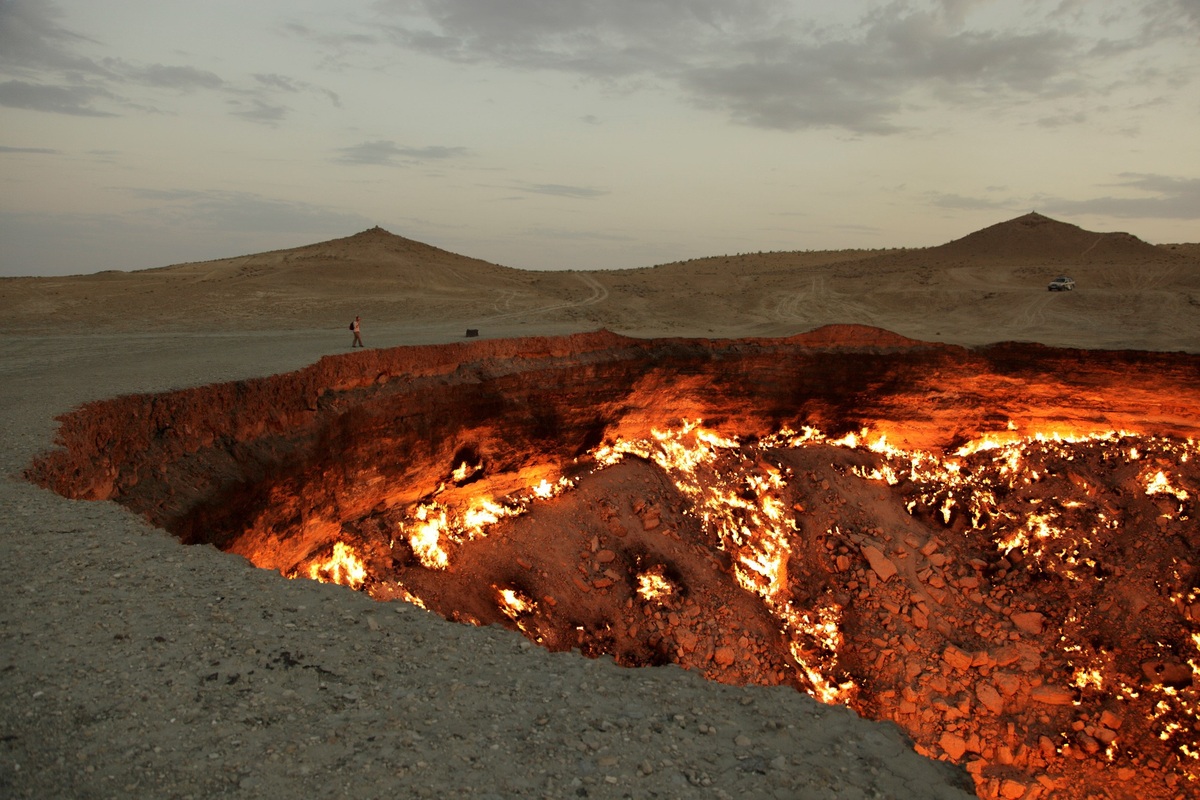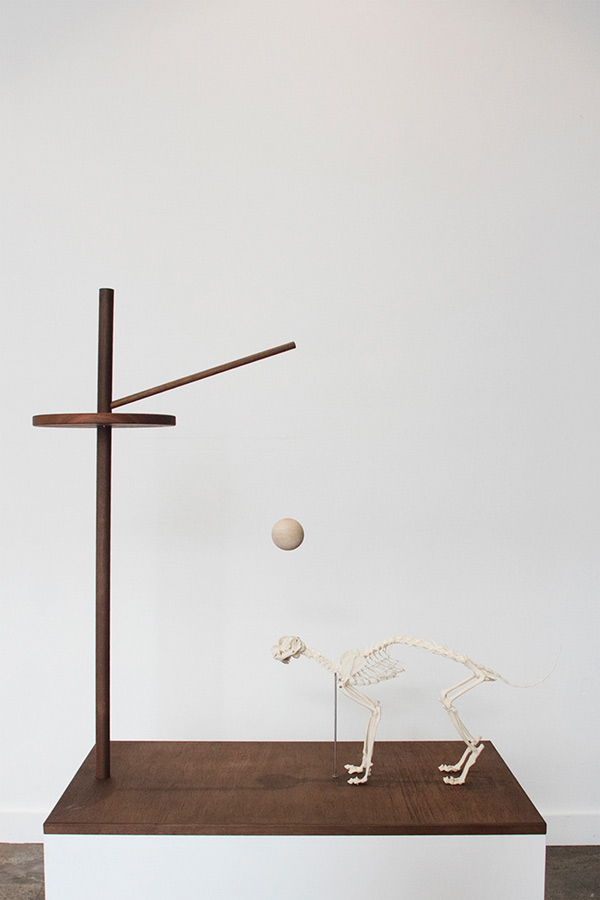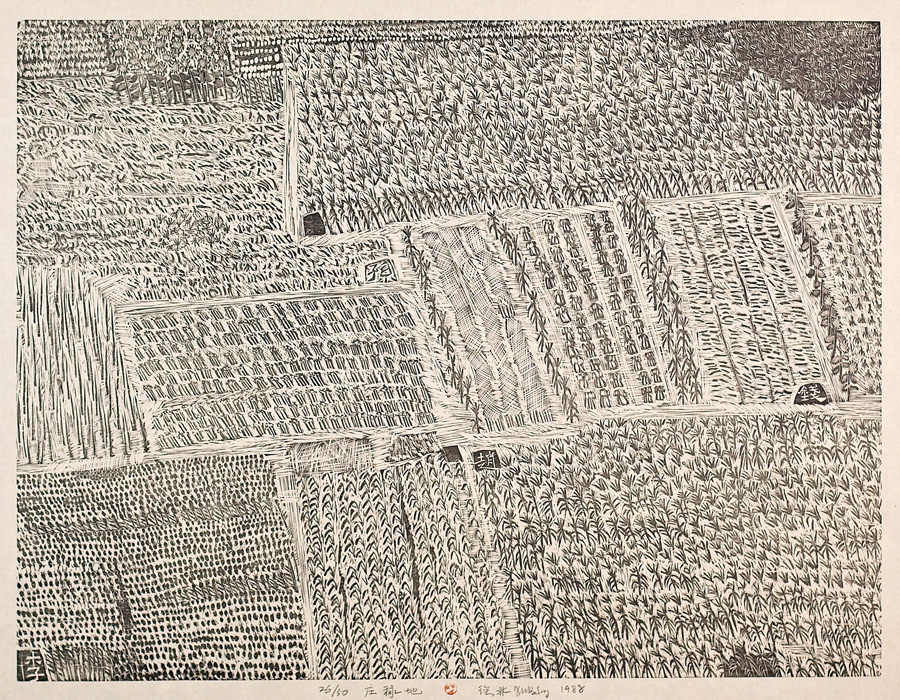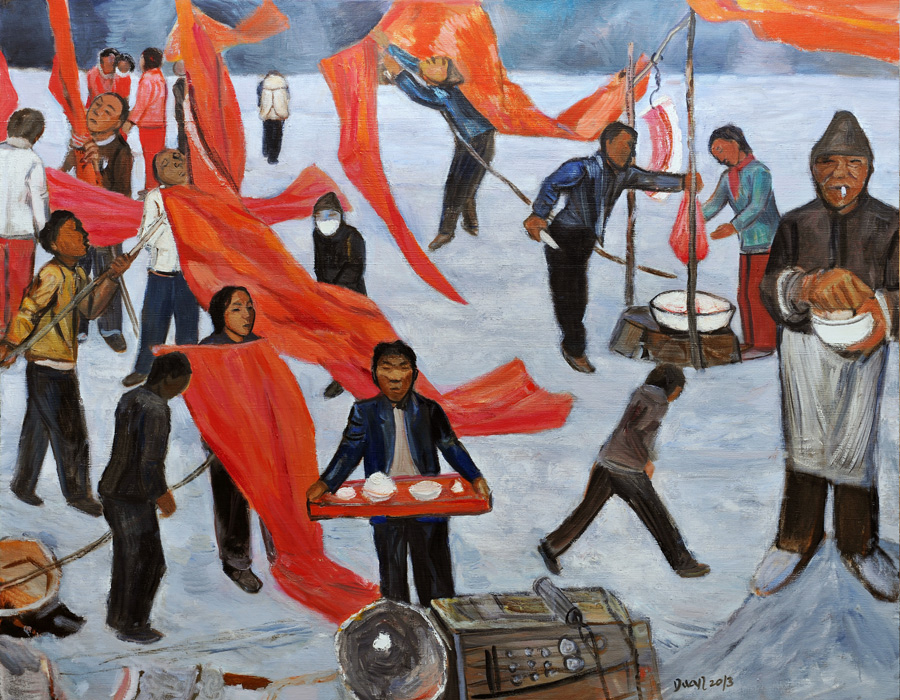 |
|
Vietnam artist Thao-Nguyen Phan's work [Photo provided to China Daily] |
The ongoing Yinchuan Biennale studies a diverse and complex world through the works of artists from China and abroad, Li Qi reports.
The nomadic life, among human society's oldest ways of subsistence, is increasingly rare in modern times. People travel wider and more frequently in the globalized era, and technology has enabled people to get information about what's happening far away even without having to leave home.
But human activity, in the real and virtual worlds, has led to ecological deterioration, confusion around cultural identities and clashes between immigrants and natives, among other issues.
This diverse and complex world is a topic of discussion at the ongoing Yinchuan Biennale, being held at the Museum of Contemporary Art, Yinchuan, in the capital of Northwest China's Ningxia Hui autonomous region. The works of 92 artists from around the world are on show at the second edition of the biennale which runs until Sept 19.
Marco Scotini, the event's Italian curator, says he hopes the exhibition will create an atmosphere that will distinguish the biennial from others held in Beijing, Shanghai or Shenzhen.
 |
|
A still from French artist Adrien Missika's video work Darvaza (Door) [Photo provided to China Daily] |
Scottini and an international team decided on the exhibition's theme-Starting from the Desert-grounded in the history and the geology of Yinchuan, a city surrounded by the Helan Mountains and the Yellow River and which faces the Tengger Desert to the west.
"Since I first came to Yinchuan, followed by several other trips afterward for the exhibition's preliminary work, there are two things that have impressed me deeply, the sky and the horizon," Scottini says. "All traces of history have somewhat disappeared in them."
He says that, although Yinchuan now seems to be a remote corner of the world, the historical city was an important place on the ancient Silk Road which witnessed great exchanges of not only goods, but also knowledge. It was a point where nomadic and agricultural cultures met and influenced each other.
While the city is embarking on a program of urbanization-it is being revived through planned buildings, wide roads and green parks-it will also face related challenges, such as traffic jams and pollution.
Scottini and his team use the word "desert" as a metaphor for the small world of an individual. They ask audience members to drop any self-centered views and embrace a broader vision of the world, regardless of whether they live in a peripheral city such as Yinchuan, or a more developed part of the country.
 |
|
Work of Robert Zhao Renhui of Singapore [Photo provided to China Daily] |
"Every person is an island, yet we are connected," says Lu Xinghua, the Chinese co-curator.
One of the opening artworks at the exhibition, a pyramid installation titled The Center of the World expresses this idea. Its creator, the Beijing artist Song Dong, envisioned the wood structure for the exhibition by modeling it after an Altar of Earth and Grain from the 15th century, where royal ceremonies for good harvests were held.
Ruins of the structure are at Zhongshan Park in the city.
In his work, Song creates usable steps so that people can walk to the top of the structure. There, he covers it with 24 types of sand to indicate the world's 24 time zones. He says ancient Chinese saw their land as the center of the world, while today, through his work, he hopes to lead people to look beyond their immediate surroundings to a more diverse landscape of cultures, and rethink their relationship with the world as people's understanding of it is enriched.
Unlike the first biennale, which showed more visually appealing works, the current exhibition presents dozens of photos, videos and installations, along with considerable text for reference that approach the theme with a calm feeling. While this might make understanding the exhibits difficult at first sight, the viewer can perhaps relate to them by spending more time at the biennial.
 |
|
Xu Bing's work [Photo provided to China Daily] |
Paris-born artist Adrien Missika's video, Darvaza (Door), zooms in on a flaming chasm in the Karakum desert in Turkmenistan. It is known as a tourist attraction, and called the "gate of hell" by locals. A drilling accident in 1971 resulted in the ceaseless burning of a crater-like hole since, but Missika's work, showing both the terror and the unspeakable beauty of the flames, leads people to contemplate, not just the power of nature, but also how easily people can cause disasters.
The exhibition at Yinchuan Biennale also looks at the ecological systems and cultures that are either too small or too isolated to be overlooked.
Mariam Ghani from New York, another featured artist at the exhibition, focuses on the languages of ethnic groups in China, especially those from the northwestern areas. She shows the linguistic diversity by drawing a colorful map, with which she also illustrates the gradual erosion of minority languages across the world.
Along with the fading of these languages, the histories and identities of these cultures are also lost, she says.
Contact the writer at linqi@chinadaily.com.cn
If you go
10 am-6 pm, Tuesday to Sunday, through Sept 19. 12 Hele Road, Xingqing district, Yinchuan. 0951-8426106.
 |
|
Chinese artist Duan Zhengqu's painting, Countryside Festival. |

Presented by Chinadaily.com.cn Registration Number: 10023870-7
Copyright © Ministry of Culture, P.R.China. All rights reserved